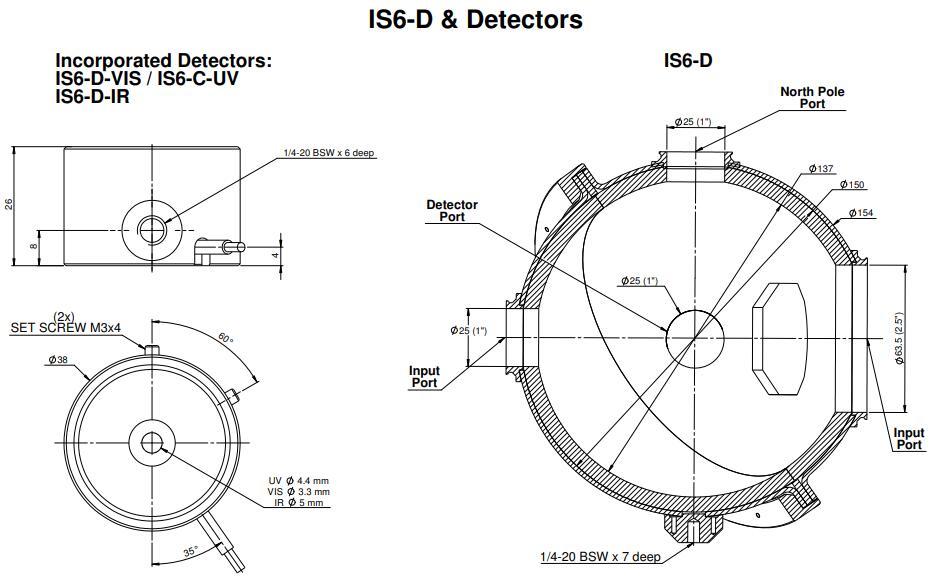Updated:2025-03-13
Views:1215
 WeChat
WeChat
 QQ
QQ
 Online Service
Online Service
 User's Manual
User's Manual
The IS6-D-IR is a 6” integrating spheres (5.3” inside) with a Germanium detector for use with divergent (D) beams. The IS6-D-IR comes with a IR detector, is calibrated from 700 to 1800nm and can measure up to 30W.

| Aperture | ?26mm |
| Spectral Range | 700-1800nm |
| Power Range | 20μW-30W |
| Dimensions | ?154 (mm) |
| Max Pulse Energy | 0.3mJ |
| Max Average Power Density | 1 kw/cm2 |
| Max Average Power | 30W |
| Max Beam Divergence | ±60 deg |
| Sensitivity to Beam Divergence | ±3% |
Combination of error and total error
The accuracy and calibration errors published by Ophir are usually 2 Sigma or K=2 errors, or recognized statistical analysis based on protective tape is used. This means that the system error of measurement will not exceed the specified error in 95% of cases. If the specified error is ± 3%, the error will not exceed 3% in 95% cases and 4% in 99% cases. In a very bad case, the total expected error is the sum of various contribution errors.
If sensors are sent for recalibration, a large number of sensors may show that the difference between the first and second calibrations is greater than the specified error. This is because the error may be - 2% for the first calibration of the sensor and+2% for the second calibration. Both times, the sensor is within the specified error range of ± 3%, but it will display 4% changes before and after.
If working at the maximum power or pulse rate less than 70%, it can be assumed that the linear error is random. If the beam is not larger than 1/4 of the aperture and centered, the uniformity error can be ignored. In this case, a statistical combination of errors can be used to calculate the expected total error.
Customer Service QQ
Customer Hotline:
Technical Supports